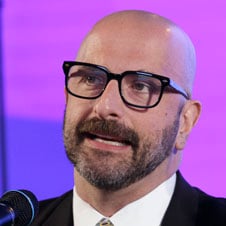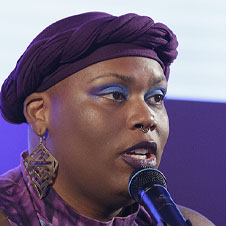After a decade of advocacy from the AMA, the Food and Drug Administration (FDA) this spring finally removed its longstanding restrictions on blood donations from men who have sex with men.
That the victory came so recently shows that “stigma and discrimination against LGBTQ+ people are still prevalent,” said Jesse M. Ehrenfeld, MD, MPH, the first openly gay person elected AMA president. “We still face considerable barriers to care.”
The AMA is advocating that the FDA push this policy further by removing similar restrictions regarding corneas, human cells and other tissue-based products. It is just one of a number of ways in which the AMA is working to address inequities affecting LGBTQ+ patients.
Most recently, the AMA House of Delegates adopted a policy calling for equal access to adoption services for LGBTQ+ families; endorsed efforts to encourage more LGBTQ+ representation in medicine and reaffirmed its support for dedicated public health and public policy to lower suicides among LGBTQ+ youth. In addition, the AMA and others filed an amicus brief in federal court to protect access to pre-exposure prophylaxis (PrEP) and other preventive care services under the Affordable Care Act.
The AMA is working diligently at the state and federal levels to expand access to medical services, reduce stigma in treating patients with unique needs and break down discriminatory barriers to necessary care.
But that was not always the case, as Dr. Ehrenfeld noted during a panel discussion he moderated for the 2023 AMA Annual Meeting’s health equity open forum.
“If you think back to the ’50s, the ’60s, the ’70s, homosexuality—being gay, being trans—was stigmatized by our AMA. It was labeled a medical disorder,” Dr. Ehrenfeld said. “The health needs of our community were ignored.”
It wasn’t until the early 1980s that “the AMA began to acknowledge and debate health issues pertaining to LGBTQ+ individuals—and even then, those conversations were largely limited to gay men,” added Dr. Ehrenfeld, a senior associate dean, tenured professor of anesthesiology and director of the Advancing a Healthier Wisconsin Endowment at the Medical College of Wisconsin.
HIV/AIDS crisis sparked change
The turning point came with AIDS, Dr. Ehrenfeld said, adding that by the late ’80s the AMA became engaged in a positive way—raising awareness about AIDS, advocating a science-based response to this international crisis, and helping physicians and the public better understand how to deal with the virus.
Around the same time, work had also begun to amend AMA bylaws to specifically ban discrimination within the organization on the basis of sexual orientation. In 1994, the AMA dropped its support for conversion therapy (PDF), and then adopted policy in 2000 to totally oppose it.
Dr. Ehrenfeld also noted the AMA’s evidence-based policy opposes the criminalization of gender-affirming care and describes it as “medically necessary care” for patients with gender dysphoria.
“We stand by that decision today, even as states around the country seek to ban or somehow restrict the practice,” he said.
Find out how the AMA Foundation is working to shape the future of LGBTQ+ health through its National LGBTQ+ Fellowship Program.
New approach to fighting stigma
One of the speakers on the panel, Demetre Daskalakis, MD, MPH, an infectious disease physician who serves as the deputy coordinator of the White House National Mpox Response, noted that stigma continues to affect the nation’s LGBTQ+ health policies.
“HIV generates stigma that goes beyond just a virus,” said Dr. Daskalakis. It “permeates through the LGBTQ+ experience.”
Dr. Daskalakis previously served as director of the Centers for Disease Control and Prevention (CDC) Division of HIV Prevention and as assistant commissioner for the New York City Department of Health and Mental Hygiene’s Bureau of HIV.
He described how, across the nation, HIV prevention and treatment programs were structured and siloed in a fashion that did not allow LGBTQ+ people to “achieve their ultimate state of health.”
Panelist Elle Lett, PhD, a statistician-epidemiologist and MD candidate at the University of Pennsylvania Perelman School of Medicine, gave a recent example of this locally in Philadelphia.
“It was wholly predictable who would suffer disproportionate harm in an mpox outbreak and who would have access to vaccines,” said Lett.
A study published this spring in the CDC’s Morbidity and Mortality Weekly Report noted that despite the administration of more than 1 million vaccine doses, only 23% of the at-risk population has been fully vaccinated.
“Although approximately one in eight first dose recipients were reported to be Black, this group accounts for approximately one in three mpox cases,” the study said.
Change is happening, however. The CDC and other federal agencies are encouraging their public health partners to adopt a “status-neutral” approach to HIV care and prevention, Dr. Daskalakis explained.
This approach creates “one door” for HIV prevention and treatment and encourages a comprehensive whole-person assessment of a person’s unique situation where doctors can treat the patient in front of them—and not their HIV status, said Dr. Daskalakis.
Learn about the AMA Advisory Committee on LGBTQ Issues, which highlights LGBTQ+ news and topics related to patients and physicians.






